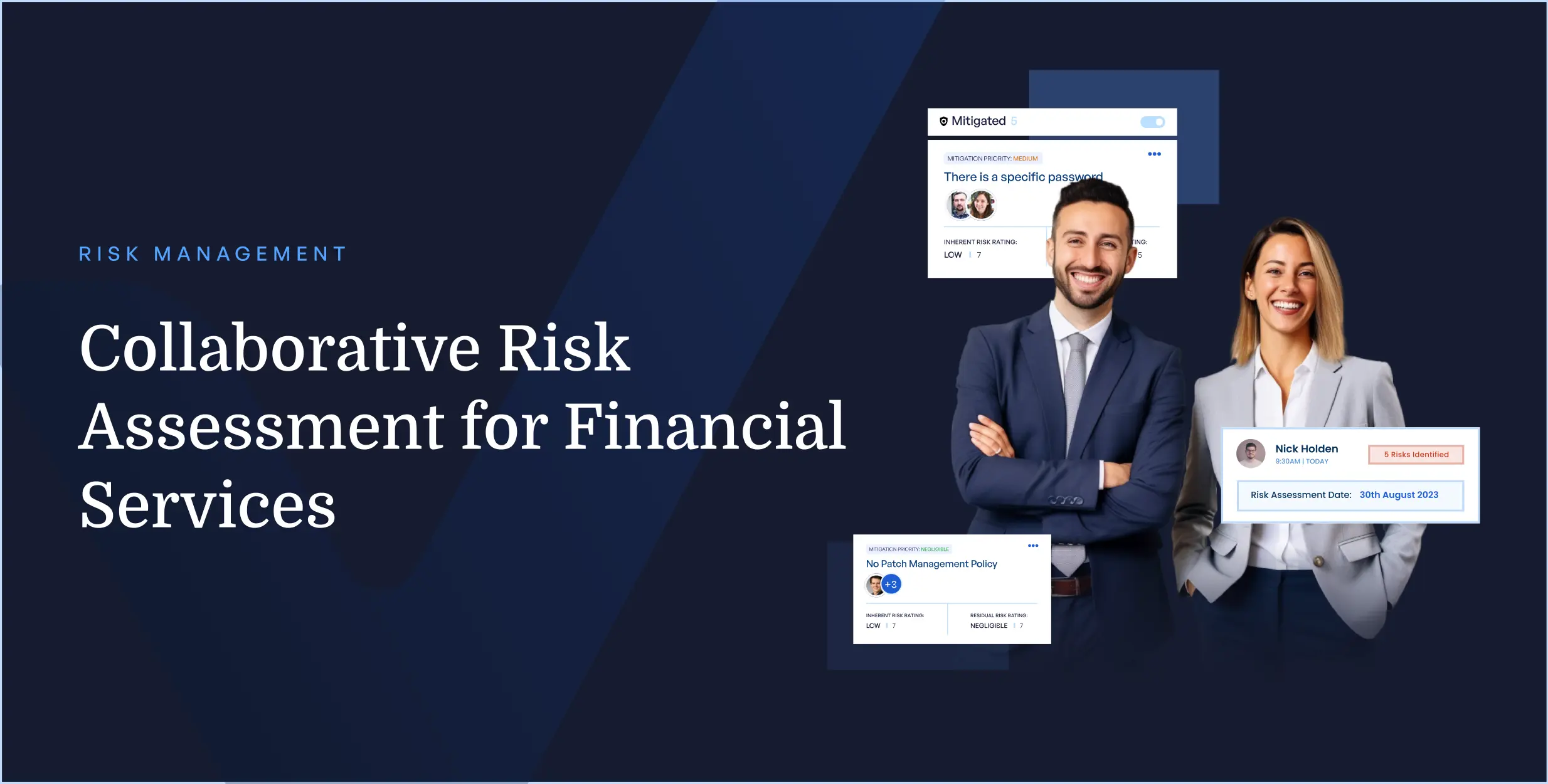Collaborative Risk Assessment for Financial Services
Effective risk assessment is crucial for financial service providers, whether banks, insurance companies, investment management firms, or brokerage firms. All must remain compliant and prepared to handle risks at all times.

Risk assessment demands extensive collaboration and control over shared information. However, the overuse of traditional communication tools, like emails and phone calls, while accessible, is not scalable and lacks centralized communication.
Modern compliance and risk leaders need contemporary solutions to address the challenges associated with collaboration and communication in risk assessment processes.
Challenges
Senior Risk and Compliance Officers in Financial Service organizations often face challenges in establishing collaboration across the organization, as well as risk assessment stakeholders across departments.
As a leader, you are responsible for overseeing risk assessment and bringing collaboration into the team, but you may be struggling with:
- Communicating risk assessment activities through emails without the ability to track team due diligence.
- Reliance on phone calls for reminders leads to information gaps and inconsistency.
- Conducting manual, time-consuming cross-departmental meetings.
Solution
VComply is a unique platform that enables you to onboard stakeholders from all departments and locations, creating a virtual space for risk assessment, information sharing, and document management, eliminating the need for manual processes.
Key features for facilitating risk assessment and collaboration include:
Steps to follow
Follow the simple steps below to establish a collaborative risk assessment process for your team:
Step 1: Onboard teammates to create a virtual workspace
Effortlessly onboard your risk team members within the VComply platform using only their email addresses.
Assign role-based work permissions and control information access to manage risk assessment activities across all stakeholders effectively.
Create user groups for enhanced collaboration and establish a unified space to monitor individual responsibilities.
Step 2: Create department and location-specific responsibility centers
Establish responsibility centers tailored to specific departments or locations.
Associate specific users with their designated responsibility centers.
Create related risk assessment tasks and promote collaboration across the entire organization.
Step 3: Centralize risk assessment through risk workroom
You will no longer need to share information through emails and phone calls. When you identify and register a risk in VComply, a dedicated risk workroom is automatically generated for that specific assessment.
Stakeholders can track the progress of the assessment and exchange information within the workroom. This centralizes information and eliminates the need for time-consuming meetings.
Step 4: Collaborate through Discussion Board
In the risk workroom, you and your team can share feedback and comments through the ‘Discussion Board.’ The assignee of the risk assessment will receive real-time updates on all comments and feedback.
Step 5: Automate task and activity reminders
Notifying individuals about their risk-related tasks is now easier than ever.
Once a risk workroom is created, all relevant stakeholders receive real-time email and platform notifications.
Automatic alerts are consistently sent to all stakeholders until the expected work is completed. This significantly reduces the likelihood of missed communication.
Step 6: Share files and folders through the digital space
Create customized folders for specific risks and centralize document sharing with an easy upload option.
Once the files are uploaded, all stakeholders can access them from anywhere, at any time, eliminating information gaps and reducing the risk of information leakage.